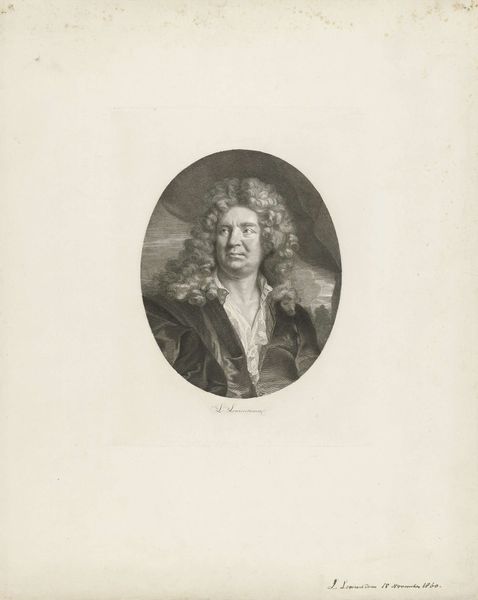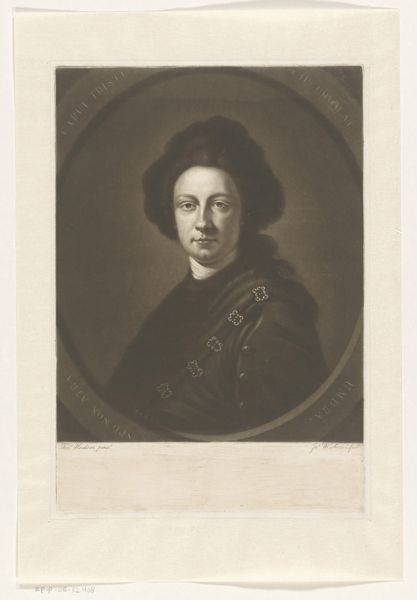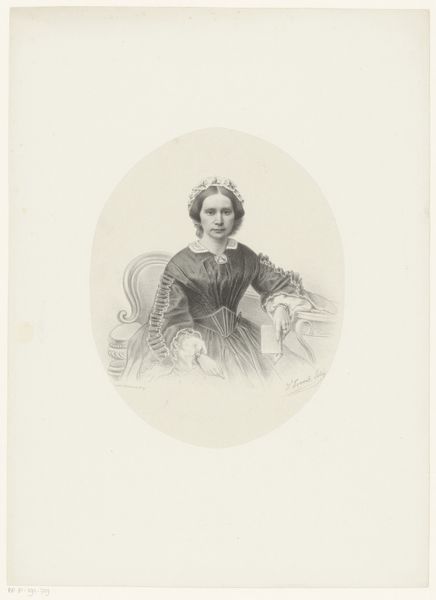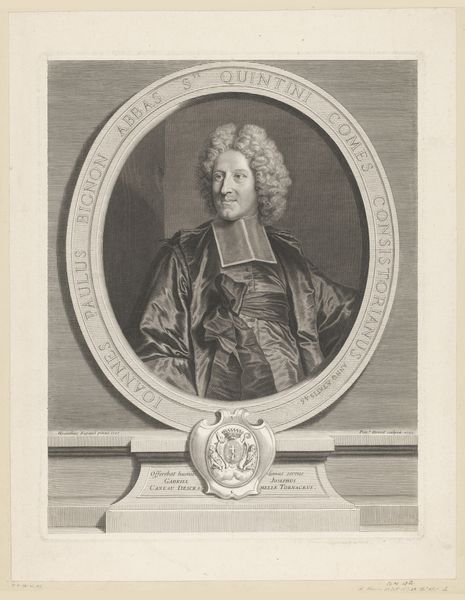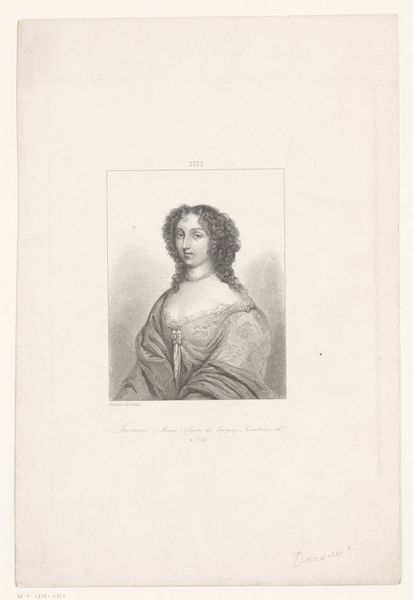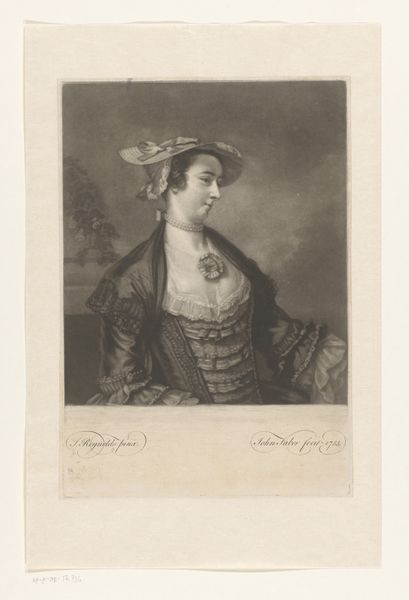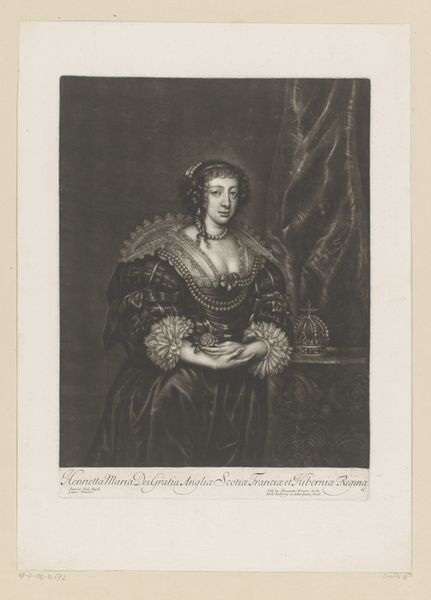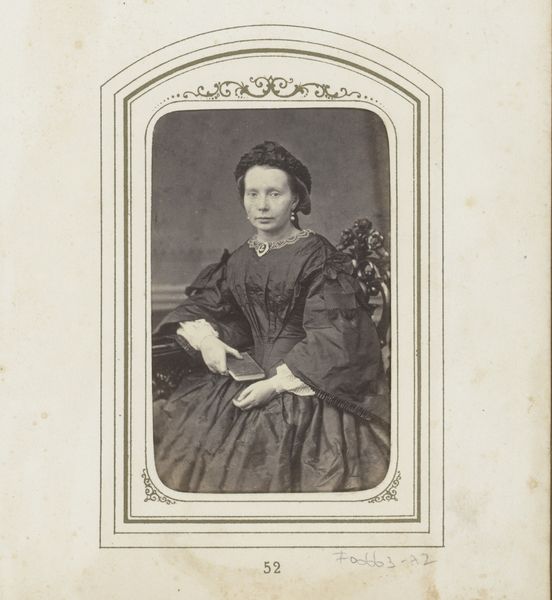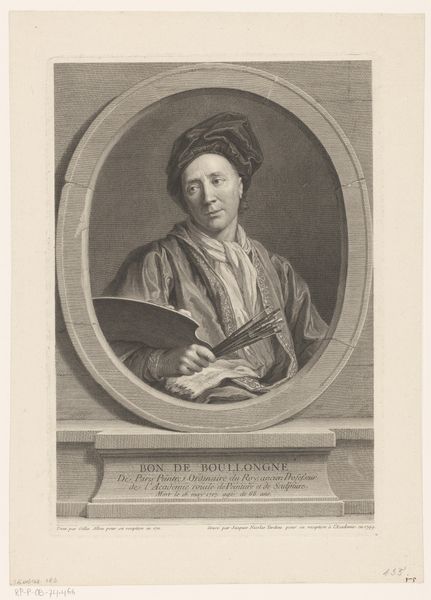
#
portrait
# print
#
historical photography
#
19th century
#
realism
Dimensions: height 349 mm, width 280 mm
Copyright: Rijks Museum: Open Domain
Curator: Welcome. We are standing before a print titled "Portret van Emma Boissevain - Nicholls." This piece, crafted sometime between 1855 and 1898, is currently held in the collection of the Rijksmuseum. The artist responsible is Friedrich Wilhelm Burmeister. Editor: Oh, she has this steely gaze, doesn't she? It's as if she's staring right through me. The oval frame is a bit much, very ornate compared to her almost severe presence. There is a book near her, but she looks like a general ready for the war. Curator: Indeed. Let’s consider the print's composition. Burmeister’s utilization of chiaroscuro, the interplay of light and shadow, is remarkable. The artist creates depth through subtle gradations of tone and a detailed texture across the sitter’s clothing. What do you make of that interplay of light, especially in relation to historical portraiture? Editor: I think she wanted to project some powerful, confident character, maybe even some subtle kind of dominance. Maybe to prove women can achieve powerful things, considering those old times and prejudice... I imagine the dress, although ornate, looks more somber and subdued due the fact of being a print and black and white artwork. Her pale bonnet and lace are the opposite. I don't know, something in the way her hands rest suggests purposefulness but with class, you know? A life not of just ease. Curator: I find the lack of specific background intriguing, as this choice effectively focuses attention entirely on Emma Boissevain - Nicholls herself, highlighting her physical and, as you put it, psychological presence. Furthermore, the decorative elements framing the central image draw us into the piece in a subtle way. Do you agree? Editor: Definitely, it’s a clever trick! You see all those baroque curls in the frame around her? It's like trying to put her in a pretty little box. But her strength overpowers that—the way Burmeister had her look to us breaks free of the artifice around her. A silent protest perhaps... Curator: A thought-provoking interpretation! As we conclude our discussion, I believe the success of the portrait lies in Burmeister's technical skill. Editor: And it's more than technique—Burmeister captured a spark of defiance, a quiet insistence that is beautiful. It is about this human connection between the past and ourselves.
Comments
No comments
Be the first to comment and join the conversation on the ultimate creative platform.
